Prayagraj Yatra - The King of Tirthas
Prayagraj Yatra
Places to visit in and around Prayagraj:
1. Sri Veni Madhav Temple
2. Triveni Sangam – Magnificent Confluence of Ganges, Yamuna and invisible Sarasvati Rivers
3. Lord Caitanya’s Footprints at Sri Dashashwamedha Brahmeshwar Mahadev Temple
4. Sri Nag Vasuki Temple
5. Bharadvaja Muni’s Ashram
6. Akshaya Vat of Lord Ramacandra near Patalapuri Temple at Prayagraj Fort
7. ISKCON Prayagraj – Abode of Sri Sri Radha Veni Madhava
8. Sri Rupa Gaudiya Matha
9. Sri Bada Hanuman Ji Temple
10. Dasasvamedha-ghata
11. Dwadash (12) Madhav Temples
- Sri Asi Madhav Mandir at Sri Nag Vasuki Temple
- Sri Adi Vat Madhav Mandir at Triveni Sangam
- Sri Sankasht Har Madhav Mandir resides in a banyan tree on the banks of Ganges in Jhusi
- Sri Shankha Madhav Mandir at Chhatnag Munshi Bageecha in Jhusi
- Sri Adi Veni Madhav Mandir at Arail Ghata
- Sri Chakra Madhav Mandir near Someshwar Temple in Arail Ghata in the Agni corner of Prayag
- Sri Gada Madhav Mandir near Chhivanki railway station situated across the Yamuna
- Sri Padma Madhav Mandir at Bikar Deoria village on Bihta road ahead of Ghurpur on Yamuna
- Sri Manohar Madhav Mandir at Johnsanganj
- Sri Bindu Madhav Mandir is near Draupadi Ghata
- Sri Veni Madhav Mandir at Dharaganj
- Sri Anant Madhav Mandir is near Ordinance Depot Factory
12. Lakshagriha near Handia
Prayagraj, also called Tirtha-raja, is the King of all the places of pilgrimage. Lord Brahma conducted the first (pra) ten yajnas (yag) at Dasasvamedha-ghata at Prayagraj after the completion of creation. Prayag in Sanskrit also means the confluence of the rivers or Sangam. The highly revered and astoundingly beautiful Triveni Sangam, the confluence of the holiest rivers Ganges, Yamuna and invisible Sarasvati, is the most sacred site and centre-point of pilgrimage to Prayagraj since time immemorial. Here, the pale-yellow water of the Ganges meets the blue green water of Yamuna. Indeed, it is a brilliant sight and a lifetime experience to witness this amazing transcendental phenomenon. One has to travel by boat quite a distance from the land to the middle of the riverbeds to reach Triveni Sangam. The Ganges is only 4-feet deep, while the Yamuna is 40-feet deep near the point of the nexus. The river Yamuna ends at this point, while the Ganges continues after that till it meets the sea at the Bay of Bengal.
This area is of high importance at Kumbha-mela, the largest gathering of the devout on earth, held every 12 years. The Mela alternates between Nasik, Prayagraj, Ujjain and Haridwar every three years. The one celebrated at the Holy Sangam in Prayagraj is the largest and holiest of them. Triveni Sangam is the same place where drops of Nectar fell out of a pitcher from the hands of Mohini Murti avatar of the Supreme Lord. The Ardh, or half Kumbha Mela, is held every six years on the banks of Sangam. Second only to the Kumbh in sanctity, the Ardh Kumbh also attracts devotees in the millions, from all over the world. Magha Mela is an annual event held at the Sangam.
Prayagraj is endowed with unique temples and ancient deities. Apart from Triveni Sangam, the places listed above are highly significant and worth visiting. Lord Caitanya Mahaprabhu came to Prayagraj twice when going to and while returning from Vrindavana as described in Sri Caitanya Caritamrta Madhya-lila 17.149-151, Madhya-lila chapters 18 and 19.
Sri Caitanya Caritamrta Madhya-lila 17.149 describes, “Sri Caitanya Mahaprabhu then went to Prayaga, where He bathed at the confluence of the Ganges and the Yamuna. He then visited the temple of Veni Madhav and chanted and danced there in ecstatic love. The city of Prayaga is situated a few miles from the city of Allahabad. The name Prayaga is given due to successful sacrifices performed there. It is said, prakrsto yago yaga-phalam yasmat. If one performs sacrifices at Prayaga, he certainly gets immediate results without difficulty. Prayaga is also called Tīrtharaja, the king of all places of pilgrimage. This holy place is situated at the confluence of the rivers Ganges and Yamuna. Every year a fair takes place there known as Magha-mela, and every twelve years a Kumbha-mela is also held. In any case, many people come to bathe there every year. During Magha-mela, people from the local district generally come, and during Kumbha-mela people come from all over India to live there and bathe in the Ganges and Yamuna. Whoever goes there immediately feels the place’s spiritual influence. A fort located there was constructed by the emperor Akbar about 500 years ago, and near the fort is a place called Triveni. On the other side of Prayaga is an old place known as Pratisthana-pura. It is also well known as Jhunsi. Many saintly people live there, and consequently it is very attractive from a spiritual point of view.”
Sri Veni Madhav Temple is the most prominent and important temple of Prayagraj. Sri Veni Madhav is the presiding deity of Prayagraj. Sri Caitanya Caritamrta Madhya-lila 17.149 describes that Lord Caitanya Mahaprabhu visited the temple of Veni Madhav and chanted and danced there in ecstatic love. The Supreme Lord manifested as Veni Madhav when, in the Treta-yuga, a fearsome demon named Gajkarna caused severe disturbances and atrocities upon the inhabitants of Pragaraj. At one time, he drank the waters of three sacred rivers Ganges, Yamuna and Sarasvati, completely at the Triveni Sangam, leaving not a drop of water remaining in the whole world. All the inhabitants, including the humans, Gandharavas, Kinnaras, etc., approached the Supreme Lord pleading before Him to save Triveni Sangam. The Lord immediately appeared on His Garuda carrier at Prayagraj and fought with Gajkarna. The fierce fight lasted for three days. The Lord severed the head of Gajkarna with His Sudarsana disc, and the waters of Triveni Sangam came out of Gajkarna’s stomach after he fell dead. As the Lord started to return to His transcendental abode, the personification of Prayagraj appealed to the Lord to stay back at Prayagraj. He requested Lord that demons may attempt to take the Triveni Sangam away in the future the way Gajkarna did. So, it would be ideal if the Lord stayed back to protect the Triveni Sangam and the world. The Lord agreed to the humble appeal of Prayagraj personified and granted his wish. He announced that He would stay back in Prayagraj in the form of Veni Madhav. The Lord expanded Himself into twelve forms and circled Triveni Sangam to protect it always.
So, there are twelve Dwadash Madhav temples, as listed above, situated at different locations of Prayagraj. The chief among Them is Sri Veni Madhav Temple at Dharaganj. At this temple one can see a rare photo of A.C. Bhaktivedanta Swami Prabhupada along with the Chief mahant of the temple. One of the twelve Veni Madhav, Sri Adi Vat Veni Madhav, is situated in the divine waters at Triveni Sangam. The Supreme Lord continues to protect Prayagraj and the Triveni Sangam to this day.
Lord Ramacandra’s Visit to Prayagraj
The Ramayana describes that Lord Rama also came to Prayagraj twice. During His first visit, after being sojourned on Their journey for 14 years of exile from Ayodhya, Lord Rama, Sita and Lakshmana arrived at Bharadvaja Muni’s Asrama after crossing the Triveni Sangam at Prayagraj. The great sage Bharadvaja welcomed Lord Rama and insisted He spend the exile period at his asrama. However, the Lord expressed that since residents of Ayodhya are close to this place, they can appear there in search of Him. So, Lord Rama inquired about another place They should stay. Bharadvaja Muni suggested Him go to the forest of Chitrakoot. Bharadvaja Muni’s asrama still exists near the University of Allahabad. In Treta-yuga, the Ganges River used to flow near this asrama. Bharadvaja is also one of the Sapta Rsis as mentioned in Srimad-Bhagavatam Canto 8, chapter 13. During His second visit, while returning from Lanka, Lord Rama's pushpaka vimana stopped over at Prayagraj. Here, Lord Rama asked Hanuman to go to Ayodhya to testify whether His brother Bharata was genuinely willing to renounce the kingdom of Ayodhya to Him. Following the orders of Lord Rama, Hanuman went to Nandigram near Ayodhya, where Bharata was living. Hanuman was utterly startled to see the plight of Bharata in intense separation from Lord Rama, and His intense devotion and dedication towards the Lord. When Bharata and Hanuman met, they embraced each other, soaking with tears of joy. After Hanuman learned that Bharata would give up His life if Lord Rama made a moment’s delay in returning to Ayodhya after the completion of His exile period, Hanuman immediately departed to Prayagraj and narrated the whole incident to Lord Rama. Thereafter, Lord Rama, Sita and Lakshmana proceeded to Ayodhya.
Akshaya Vat is the eternal tree that is mentioned in the Valmiki Ramayana. While Lord Rama visited Bharadvaja Muni's Asrama, the revered sage had told Him that if He sees the Akshaya Vat tree in Prayagraj on His journey to Chitrakoot, He can be assured that He is on the right path. This gigantic tree is located near Patalapuri Temple at Prayagraj Fort on the banks of the Yamuna River next to Triveni Sangam. As per the Padma Purana, it has three names: Shyama-vata, Adi-vata and Akshaya-vata. The invisible Sarasvati River flows beneath this tree. There is a Sarasvati well called Sarasvati Koop inside the Prayagraj fort from where the Saraswati river flows in and mixes with the Sangam. Lord Brahma performed the first yajna under Akshaya Vat by inviting all the demigods. This tree was chopped and burnt 23 times by the Mughals, but it grew back again and attained the same form very soon.
Nag Vasuki is an ancient temple dedicated to Vasuki, the king of serpents, on the banks of the Ganges River in Prayagraj. Vasuki played a pivotal role during the churning of the milk ocean pastime by allowing himself to coil around Mandara Mountain as a churning rope. Lord Krishna says in both Bhagavad-Gita Chapter 10» The Opulence of the Absolute» Text 28 and in Srimad-Bhagavatam Canto 11 Chapter 16» The Lord’s Opulence» Text 18, that among serpents, I am Vasuki. Srimad-Bhagavatam Canto 8, Chapter 7, Text 1 states: “The demigods and demons summoned Vasuki, king of the serpents, requesting him to come and promising to give him a share of the nectar. They coiled Vasuki around Mandara Mountain as a churning rope, and with great pleasure they endeavoured to produce nectar by churning the Ocean of Milk.”
Vasuki
is worshiped in a deity form made from black stone and has five hoods and four
coils on his body. Lord Caitanya stayed there during His first visit to
Prayagraj. This temple is also the home of Sri Asi Madhav, one of the Dwadash
(12) Madhav temples. Padma Purana describes that Vasuki rested here
after the churning of the ocean of milk. Vasuki's body had weakened from the
bruises caused by the peaks of Mandara Mountain, which caused a burning
sensation on his body. To rejuvenate himself, Vasuki went to Mandrachal
mountain to rest. Despite that, he could not relieve himself of the burning
sensation in the body. Agonized, he approached Lord Vishnu for a solution, who
advised him to go to Prayagraj and bathe and drink the waters of the sacred and
cool Sarasvati River. Further, he could rest there itself until he was relieved
of his agony. Following the instructions of Lord Vishnu, he went to Prayagraj
and was successful in rejuvenating himself. When Vasuki was about to leave
Prayagraj after getting well, the demigods and sages present there asked him to
reside there permanently. He agreed to the request.
Lord Caitanya’s visit to Prayagraj
Sri Caitanya Caritamrta Madhya 17.149-151 describes that Lord Caitanya came to Prayagraj for three days during His first visit. He regularly engaged in kirtana at Sri Veni Madhava Temple. Thus, He delivered the holy name of Lord Krishna and ecstatic love. When Lord Caitanya was in Vrindavana, He was inundated with huge crowds of people and their invitations every day. This caused much disturbance. The Lord's servants, Balabhadra Bhattacarya and Sanodiya brahmana, contemplated taking Him to Prayaga as it was the beginning of the month of Magha, and it was auspicious to bathe during Makara-sankranti at Triveni Sangam. Although Lord Caitanya had no desire to leave Vrindavana, He spoke in sweet words just to fulfill the desire of His devotee. “You have brought Me here to show Me Vrindavana. I am very much indebted to you, and I shall not be able to repay this debt. Whatever you desire, I must do. Wherever you take Me, I shall go.” Thus, the Lord decided to leave Vrindavana.
Sri Caitanya Caritamrta Madhya-lila Chapter 19 describes the pastimes of Lord Caitanya at Prayagraj during His second visit. He stayed for 10 days and met Srila Rupa Gosvami. The Lord instructed Rupa Gosvami in the inner precepts on the Science of Krishna Consciousness, Bhakti-rasamrta-sindhu at Dasasvamedha-ghata, and bestowed His mercy to revive the activities of Lord Krishna in Vrindavana, which were almost lost at that time. He taught Srila Rupa Gosvami the ultimate limit of the truth about Lord Krishna, the truth about devotional service and the truth about transcendental mellows, culminating in conjugal love between Radha and Krishna. Finally, He told Rupa Gosvami about the ultimate conclusions of Srimad-Bhagavatam. (Sri Caitanya Caritamrta Madhya-lila 19.115)
Sri Caitanya Caritamrta Madhya-lila 19.1 and 19.118-19 states: just as before the creation of this cosmic manifestation, the Lord enlightened the heart of Lord Brahma with the details of the creation and manifested the Vedic knowledge. In exactly the same way, the Lord, being anxious to revive the Vrindavana pastimes of Lord Krishna, impregnated the heart of Rupa Gosvami with spiritual potency. By this potency, Srila Rupa Gosvami could revive the activities of Lord Krishna in Vrindavana, activities almost lost to memory. In this way, He spread Krishna consciousness throughout the world. By entering the heart of Rupa Gosvami, Sri Caitanya Mahaprabhu empowered him to ascertain properly the conclusions of all truths. He made him an experienced devotee whose decisions correctly agreed with the verdicts of the disciplic succession. Thus, Rupa Gosvami was personally empowered by Lord Caitanya.
Lord Caitanya also met Sri Vallabha Bhatta at Prayagraj, who very respectfully invited Lord to his residence at Adila-grama. While crossing the Yamuna river, when Lord Caitanya saw the glossy black water, He immediately jumped into the river. Everyone was filled with fear, and they all hastily pulled him out. Lord Caitanya then began to dance. Due to His heavy weight, the boat began to tilt and was on the verge of sinking. While Lord Caitanya tried to restrain Himself before Vallabhacarya, His ecstatic love for Lord Krishna could not be checked.
At Vallabhacarya’s house, Lord Caitanya met a very learned scholar and a great devotee, Raghupati Upadhyaya. Pleased by him, Lord Caitanya had a discussion with him about the characteristics of Lord Krishna. Lord Caitanya concluded the discussion, "The form of Syamasundara is the supreme form, the city of Mathura is the supreme abode, Lord Krishna’s fresh youth should always be meditated upon, and mellow of conjugal love is the supreme mellow." (Sri Caitanya Caritamrta Madhya-lila 19.106-108) The purport of Caitanya Caritamrta Madhya-lila 19.69 states: The present head of the Vallabha Bhattacarya sampradaya of Bombay is named Diksita Maharaja. He is very friendly to our movement, and whenever we meet him, this learned brahmana scholar highly praises the activities of the Hare Krishna movement. He is a life member of our Society, and although he is a learned scholar in the brahminical caste tradition, he accepts our Society and considers its members bona fide devotees of Lord Vishnu.
brahmanda bhramite kona bhagyavan jiva
guru-krsna-prasade paya bhakti-lata-bīja
“According to their karma, all living entities are wandering throughout the entire universe. Some of them are being elevated to the upper planetary systems, and some are going down into the lower planetary systems. Out of many millions of wandering living entities, one who is very fortunate gets an opportunity to associate with a bona fide spiritual master by the grace of Krishna. By the mercy of both Krishna and the spiritual master, such a person receives the seed of the creeper of devotional service." (Sri Caitanya Caritamrta Madhya-lila 19.151)
In Sri Caitanya Caritamrta Madhya-lila 19.168-177, Lord Caitanya describes the process of developing pure devotional service (Bhakti). A pure devotee must not cherish any desire other than to serve Krishna. He should not offer worship to the demigods or to mundane personalities. He should not cultivate artificial knowledge, which is devoid of Krishna consciousness, and he should not engage himself in anything other than Krishna conscious activities. One must engage all one’s purified senses in the service of the Lord. This is the favourable execution of Krishna conscious activities. These activities are called suddha-bhakti, pure devotional service. If one renders such pure devotional service, he develops his original love for Krishna in due course of time. Bhakti, or devotional service, means engaging all our senses in the service of the Lord, the Supreme Personality of Godhead, the master of all the senses. When the spirit soul renders service unto the Supreme, there are two side effects. One is freed from all material designations, and one’s senses are purified simply by being employed in the service of the Lord. Just as the celestial waters of the Ganges flow unobstructed into the ocean, so when My devotees simply hear of Me, their minds come to Me. I reside in the hearts of all. These are the characteristics of transcendental loving service to Purusottama, the Supreme Personality of Godhead: it is causeless, and it cannot be obstructed in any way. Bhakti-yoga, as described above, is the ultimate goal of life. By rendering devotional service to the Supreme Personality of Godhead, one transcends the modes of material nature and attains a spiritual position on the platform of direct devotional service. If one is infected with the desire for material enjoyment or material liberation, he cannot rise to the platform of pure loving service unto the Lord, even though he may superficially render devotional service according to the routine regulative principles. The material desire to enjoy the material world and the desire to become liberated from material bondage are considered to be two witches, and they haunt one like ghosts. As long as these witches remain within the heart, how can one feel transcendental bliss? As long as these two witches remain in the heart, there is no possibility of enjoying the transcendental bliss of devotional service. By regularly rendering devotional service, one gradually becomes attached to the Supreme Personality of Godhead. When that attachment is intensified, it becomes love of Godhead.
When Srila Rupa Gosvami met Lord Caitanya Mahaprabhu at Prayagraj, he offered the following prayers:
namo maha-vadanyaya krsna-prema-pradaya te
krsnaya krsna-caitanya-namne gaura-tvise namah
“O most munificent incarnation! You are Krishna Himself appearing as Sri Krishna Caitanya Mahaprabhu. You have assumed the golden colour of Srimati Radharani, and You are widely distributing pure love of Krishna. We offer our respectful obeisances unto You.” (Caitanya Caritamrta Madhya-lila 19.53)
Lakshagriha, where once the palace stood, made from inflammable shellac, which was constructed by Duryodhana as a conspiracy to kill the Pandavas, is situated 6 km from Handia. It is a 1-hour drive from Prayagraj.
1. Sri Veni Madhav Temple
As described above, Sri Veni Madhav is the most prominent and important temple of Prayagraj. He is the presiding deity of Prayagraj. When Lord Caitanya Mahaprabhu visited Sri Veni Madhav Temple, He chanted and danced there in ecstatic love as described in Sri Caitanya Caritamrta Madhya-lila 17.149,
‘prayage’ siya prabhu kaila veni-snana
‘madhava’ dekhiya preme kaila nrtya-gana
“Sri Caitanya Mahaprabhu then went to Prayaga, where He bathed at the confluence of the Ganges and the Yamuna. He then visited the temple of Veni Madhav and chanted and danced there in ecstatic love.”
Triveni Sangam is located at the nexus meeting point of the Ganges, Yamuna and invisible Sarasvati Rivers. Sangam means confluence. Triveni Sangam is the converging point of three rivers: the Ganga, Yamuna and Saraswati. Of these three, the River Saraswati is invisible and flows beneath the earth and meets the other two rivers from the base. The point of confluence is a sacred place for the devout and is of high transcendental importance. Here, the pale-yellow water of the Ganges merges with the brilliant blue green of the Yamuna. Kumbh Mela, the largest gathering of the devout on earth, is held every 12 years on the banks of the Triveni Sangam.
The Kumbha Mela has its roots in the pastimes of the demigods and demons fighting for a pot of nectar as described in Srimad-Bhagavatam Canto 8. The Supreme Lord, disguising Himself as an enchantress, Mohini, seized the nectar from the demons. A few drops of the precious nectar fell on Prayagraj, Nasik, Haridwar and Ujjain. Since then, the Kumbh Mela has been held in all these places, alternatively, every 12 years. The Ardh or ‘half Kumbh’ Mela, is also held every six years on the banks of Triveni Sangam. Second only to the Kumbh in sanctity, the Ardh Kumbh also attracts devotees in the millions, from all over the world. Magha Mela is an annual event held at the Sangam.
The Kumbha Festival begins on the full moon night (Purnima) of the month of Paush. While the Kumbh Festival is held at Haridwar, Ujjain and Nasik every four years, the Kumbh at Prayagraj has a special significance. The Kumbh Festival is marked by the fact that it is held on the banks of holy rivers every 12 years. In Prayagraj, however, it is held on the banks of the rivers Ganga-Yamuna, with the underground Saraswati joining in. In Haridwar, it’s held at the Ganges and in Nasik at the Godavari. A great fair is held on these occasions on the banks of these rivers with a huge congregation of devoted pilgrims. The Sangam comes alive during Kumbh and Ardh Kumbh with an enormous temporary township springing up on the vacant land on the Prayagraj side of the river.
Kumbha Mela is an enthralling and once-a-lifetime experience. Chiming of bells, perfume of incense, fragrance of flowers, chanting of Vedic hymns, throb of drums, parade of horses, camels, and elephants, processions of sadhus from different akhadas (orders) in their gold and silver chariots pulled by devotees – The Kumbh mela, is saturated in spirituality. The Mela is a blend of spiritual and cultural activities - discussions, devotional singing, mass feeding of holy men, beautiful tableaus and dance dramas depicting the pastimes of the Supreme Lord.
Sri Caitanya-Caritamrta, Madhya-lila 18.145 describes bathing during the month of Magha at the Magha-mela still takes place. This is a very old mela (assembly), dating from time immemorial. It is said that ever since the Lord, in the form of Mohini, took a bucket of nectar and kept it at Prayaga, holy men have gathered there every year and observed the Magha-mela. Every twelfth year there is a Kumbha-mela, a great festival, and all the holy men from all over India assemble there. The brahmana wanted to take advantage of the Magha-mela and bathe there. Bathing at the confluence of the Ganges and Yamuna, near the fort at Allahabad (Prayaga), is mentioned in the revealed scriptures:
maghe masi gamisyanti ganga-yamuna-sangamam
gavam sata-sahasrasya samyag dattam ca yat-phalam
prayage magha-mase vai try-aham snatasya tat-phalam
One of the twelve Veni Madhav, Sri Adi Vat Veni Madhav, is situated in the divine waters at Triveni Sangam.
3. Lord Caitanya’s Footprints at Sri Dashashwamedh Brahmeshwar Mahadev Temple
4. Sri Nag Vasuki Temple
Sri Nag Vasuki is an ancient temple dedicated to Vasuki, the king of serpents. Vasuki played a pivotal role during the churning of the milk ocean pastime by allowing himself to coil around Mandara Mountain as a churning rope. Lord Krishna says in Bhagavad-Gita 10.28 and Srimad-Bhagavatam Canto 11.16.18 that among serpents, I am Vasuki. Srimad-Bhagavatam Canto 8.7.1 states: “The demigods and demons summoned Vasuki, king of the serpents, requesting him to come and promising to give him a share of the nectar. They coiled Vasuki around Mandara Mountain as a churning rope, and with great pleasure they endeavoured to produce nectar by churning the Ocean of Milk.”
Padma Purana describes the pastime of Vasuki coming to reside in Prayagraj on the banks of the sacred Ganges as mentioned above. Adjacent to the temple is a unique big murti Bhismadeva in a reclining posture. Aurangzeb attacked this temple several times. Alarmed that his men couldn’t destroy the temple despite so many efforts, he became extremely fearful of the Deity here. As he came up to the temple, he pulled out his sword. To his surprise, Vasuki appeared before him in a frightening form as he tried to destroy the Deity. Being very frightened, he fell unconscious. Thus, his efforts to destroy the Deity became futile. Vasuki also received special blessings from Lord Vishnu and Lord Siva here.
5. Bharadvaja Muni’s Ashram
When Lord Rama, Sita and Lakshmana sojourned for 14 years of exile from Ayodhya, They halted and stayed at various hermitages. Their first stop after crossing the Ganges river was Bharadvaja Muni Asrama. They spent a night there resting and proceeded to the Chitrakoot forest from this place. A temple marks the spot on which once the hermitage of Bharadvaja Muni stood. Asrama was surrounded by lush green trees, rare species of birds and beasts and was surcharged with a devotional atmosphere.
Bharadvaja Muni was the master of Ayurveda. His gurukula was an epicentre of learning and education. Owning to the highest standards of teachings in Bharadvaja Ashrama, Prayagraj came to be known as the land of education. In the Valmiki Ramayana, Bharadwaja Muni is regarded as the ‘Chancellor’ of this Gurukula. When Lord Rama, Sita and Lakshmana arrived at his hermitage, Bharadvaja Muni welcomed Them with great respect. He lovingly offered various kinds of delicacies prepared from wild roots and fruits and arranged accommodation for Them.
7. ISKCON Prayagraj – Abode of Sri Sri Radha Veni Madhava
8. Sri Rupa Gaudiya Matha
9. Sri Bada Hanuman Ji Temple
10. Dasasvamedha-ghata
Dasasvamedha-ghata is one of the most famous and revered ghats (riverfront steps) in Prayagraj, situated on the banks of the river Ganges. It is located directly in front of Sri Dashashwamedh Temple. Lord Brahma conducted the first (pra) ten yajnas (yag) at Dasasvamedha-ghata. It is the last ghat on the Ganges before it joins the Yamuna river.
At Dasasvamedha-ghata, Lord Caitanya instructed Srila Rupa Gosvami on the inner precepts of Krishna Consciousness. Caitanya-Caritamrta Madhya-lila 19.114 mentions, “Due to the great crowds in Prayaga, Sri Caitanya Mahaprabhu went to a place called Dasasvamedha-ghaṭa. It was there that the Lord instructed Sri Rupa Gosvami and empowered him in the philosophy of devotional service.” The summary of Lord Caitanya’s instructions to Srila Rupa Gosvami is described above. Further details are mentioned in Sri Caitanya-Caritamrta Madhya-lila chapter 19 and in Teachings of Lord Caitanya – Chapter 1.
11. Dwadash (12) Madhav Temples
As described in the pastime of Sri Veni Madhav above, the Supreme Lord expanded Himself into twelve forms and circled Triveni Sangam to protect Prayagraj always. So, there are twelve Veni Madhav, known as Dwadash Madhav temples, situated at different locations in Prayagraj. The chief among Them is Sri Veni Madhav at Dharaganj. The Lord continues to protect Prayagraj and the Triveni Sangam to this day. The Lord also manifests as Sri Adi Vat Veni Madhav in the divine waters of Triveni Sangam, where the Ganges, Yamuna and Saraswati meet.
The Dwadash (12) Madhav Temples and their locations are:
- Sri Asi Madhav Mandir at Sri Nag Vasuki Temple
- Sri Adi Vat Madhav Mandir at Triveni Sangam
- Sri Sankasht Har Madhav Mandir resides in a banyan tree on the banks of the Ganges in Jhusi
- Sri Shankha Madhav Mandir at Chhatnag Munshi Bageecha in Jhusi
- Sri Adi Veni Madhav Mandir at Arail Ghata
- Sri Chakra Madhav Mandir near Someshwar Temple in Arail Ghata in the Agni corner of Prayag
- Sri Gada Madhav Mandir near Chhivanki railway station, situated across the Yamuna
- Sri Padma Madhav Mandir at Bikar Deoria village on Bihta road ahead of Ghurpur on Yamuna
- Sri Manohar Madhav Mandir at Johnsanganj
- Sri Bindu Madhav Mandir is near Draupadi Ghata
- Sri Veni Madhav Mandir at Dharaganj
- Sri Anant Madhav Mandir is
near Ordinance Depot Factory
Lord Caitanya Delivers Muslim Pathans
Lord Sri Caitanya Mahaprabhu’s pastime with Muslim Pathana Soldiers on the way to Prayagraj
Sri Caitanya Caritamrta Madhya-lila 18.161 to 213 describes a wonderful pastime where Lord Caitanya refuted the impersonalism arguments from Koran and established the personal God conception as described in the Koran when the Muslim Pathan soldiers arrested Lord Caitanya’s travelling associates when Lord had become unconscious. While traveling towards Prayagraj, Lord Caitanya heard a cowherd boy blowing his flute. Immediately, the Lord was struck with ecstatic love and fell to the ground unconscious.
While the Lord was unconscious, ten cavalry soldiers belonging to the Muslim Pathana military order rode up and dismounted. They arrested Lord Caitanya's associates thinking that they may have killed Him and looted the wealth. After some time, coming to His external senses, the Lord very loudly began chanting the holy name, “Hari Hari” The Lord raised His arms upward and began to dance in ecstatic love. Hearing this, the hearts of the Muslim soldiers were struck by thunderbolts. Among the Muslims soldiers was a grave saintly person who was wearing a black dress. His heart softened upon seeing Lord Caitanya. He wanted to talk to Him and establish impersonal Brahman on the basis of his own scripture, the Koran. Whatever arguments he put forward; the Lord refuted them all. Finally, he became stunned and could not speak.
Lord Caitanya said, "The Koran accepts the fact that ultimately there is only one God. He is full of opulence, and His bodily complexion is blackish. According to the Koran, the Lord has a supreme, blissful, transcendental body. He is the Absolute Truth, the all-pervading, omniscient and eternal being. He is the origin of everything. Creation, maintenance and dissolution come from Him. He is the original shelter of all gross and subtle cosmic manifestations. The Lord is the Supreme Truth, worshipable by everyone. He is the cause of all causes. By engaging in His devotional service, the living entity is relieved from material existence. No conditioned soul can get out of material bondage without serving the Supreme Personality of Godhead. Love at His lotus feet is the ultimate goal of life. The happiness of liberation, whereby one merges into the Lord’s existence, cannot even be compared to a fragment of the transcendental bliss obtained by service unto the Lord’s lotus feet. In the Koran there are descriptions of fruitive activity, speculative knowledge, mystic power and union with the Supreme, but ultimately all this is refuted and the Lord’s personal features established, along with His devotional service. The scholars of the Koran are not very advanced in knowledge. Although there are many methods prescribed, they do not know that the ultimate conclusion should be considered the most powerful. Seeing your own Koran and deliberating over what is written there, what is your conclusion?”
The saintly Muslim replied, “All that You have said is true. This has certainly been written in the Koran, but our scholars can neither understand nor accept it. Usually, they describe the Lord’s impersonal aspect, but they hardly know that the Lord’s personal feature is worshipable. They are undoubtedly lacking this knowledge. Since You are that very same Supreme Personality of Godhead Himself, please be merciful upon me. I am fallen and unfit. I have studied the Muslim scripture very extensively, but from it I cannot conclusively decide what the ultimate goal of life is or how I can approach it. Now that I have seen You, my tongue is chanting the Hare Krishna maha-mantra. The false prestige I felt from being a learned scholar is now gone. Saying this, the saintly Muslim fell at the lotus feet of Sri Caitanya Mahaprabhu and requested Him to speak of life’s ultimate goal and the process by which it could be obtained."
Lord Caitanya said, “Please get up. You have chanted the holy name of Krishna; therefore, the sinful reactions you have accrued for many millions of lives are now gone. You are now pure. Chant the holy name of Krishna! Chant the holy name of Krishna!” As they all began to chant, they were overwhelmed by ecstatic love."
In this way Lord Caitanya directly initiated the saintly Muslim by advising him to chant the holy name of Krishna. The Muslim’s name was changed to Ramadasa. Another Pathana Muslim present there was named Vijuli Khan. He was very young and was the son of the king. All the other Muslims, or Pathanas, headed by Ramadasa, were his servants. Vijuli Khan also fell at the lotus feet of Lord Caitanya, and the Lord placed His foot on his head. After bestowing His mercy upon them in this way, Lord Caitanya left. All those Pathana Muslims then became mendicants. Later, these very Pathanas became celebrated as the Pathana Vaishnavas. They toured all over the country and chanted the glorious activities of Lord Caitanya Mahaprabhu. Vijuli Khan became a greatly advanced devotee, and his importance was celebrated at every holy place of pilgrimage.Lord Caitanya’s First Visit to Prayagraj: https://vedabase.io/en/library/cc/madhya/17/149
Lord Sri Caitanya Mahaprabhu Instructs Srila Rupa Gosvami: https://vedabase.io/en/library/cc/madhya/19
Teachings of Lord Caitanya: https://vedabase.io/en/library/tlc/1
Varanasi Yatra: https://varanasi-yatra.blogspot.com/2023/06/varanasi-yatra.html
Chitrakoot Yatra: https://chitrakoot-yatra.blogspot.com/2023/07/chitrakoot-yatra.html
Ayodhya Yatra: https://sri-ayodhya-dharma-yatra.blogspot.com/2023/03/sri-ayodhya-dharma-yatra.html
Naimisaranya Yatra: https://naimisaranya-dhama-yatra.blogspot.com/2023/04/sri-naimisaranya-dhama-yatra.html
Incredible glimpses from Kumbh Mela Prayagraj:
https://www.facebook.com/dharmatmadas.acbsp/media_set?set=a.2351627764869596&type=1&l=b2fc1a4fa4
https://www.facebook.com/indradyumna/media_set?set=a.10213636136640678&type=3
Mayapur TV: https://www.youtube.com/@MayapurTVOfficial
https://www.youtube.com/@MayapurTVMusic
Hare Krishna TV: https://www.youtube.com/@hktv108
LIVE Morning Arati of Sri Rama Lala from Ayodhya: https://www.youtube.com/playlist?list=PLUiMfS6qzIMwrtdJGFdP2BMN9S-0VaDKS
Holy Pilgrimages – Journey to Holy Dhamas: www.Holy-Pilgrimages.com
Facebook: www.facebook.com/HolyPilgrimages
Downloadable PDFs of Articles (Archive): https://archive.org/details/@chandan_yatra_das
Downloadable PDFs of Articles (Scribd): https://www.scribd.com/user/737943473/chandanyatradas/uploads
Holy Dham: www.HolyDham.com
Hare Krishna Hare Krishna Krishna Krishna Hare Hare |
Hare Rama Hare Rama Rama Rama Hare Hare ||


















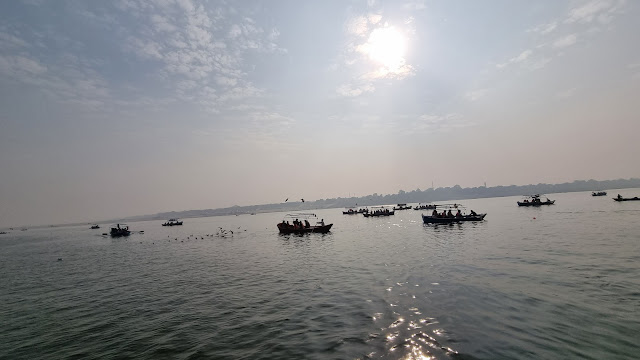







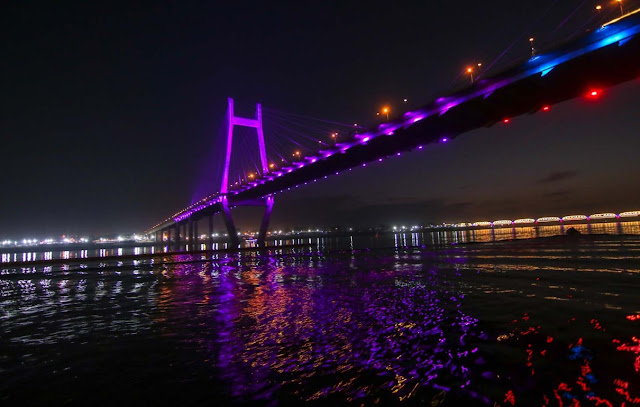


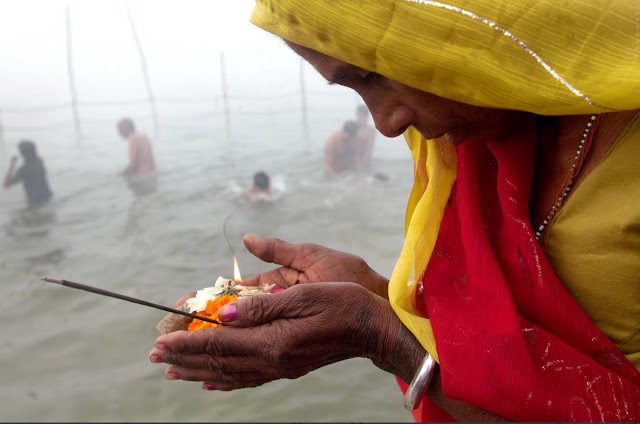






















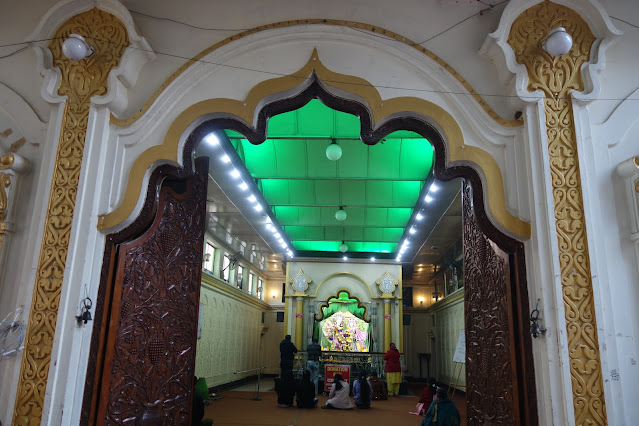







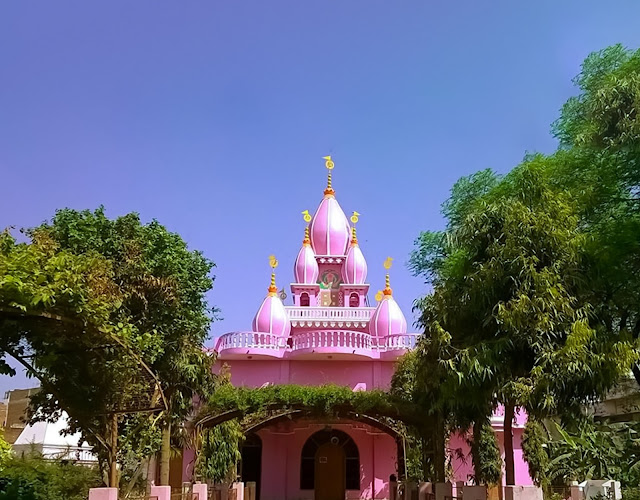




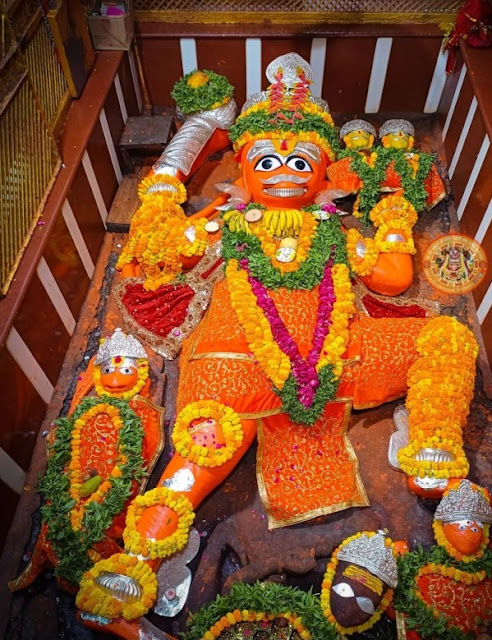








Comments
Post a Comment